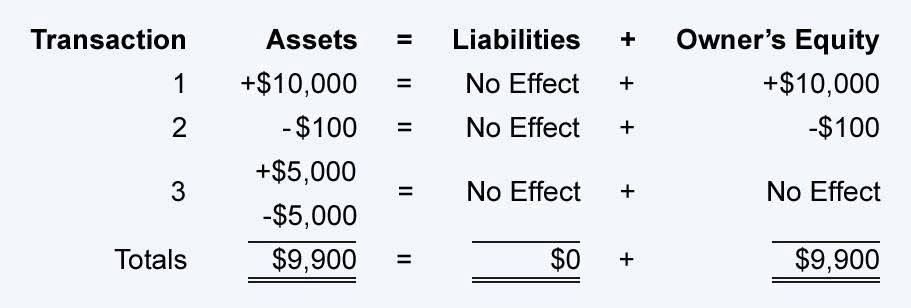
This table provides an overview of the advantages and disadvantages of amortization in general and helps to evaluate how amortization can affect various financial aspects. Our expert-led online cohort based program covers everything you need to become a world class financial modeling pro and advance your career in finance. Let's assume you take out a loan of 10,000 euros with an annual interest rate of 5% and a term of 5 years. This table summarizes the most important terms in connection with amortization and provides a brief definition as well as the respective area of application. Amortization is therefore a versatile tool that helps to systematically and systematically reduce financial liabilities in various contexts.
Why is the Amortization Period important?
- Investors rely on these metrics to make informed decisions about the company’s financial health and growth potential.
- Each year for 10 years, you’ll record an amortization expense of $10,000 on your income statement.
- Sometimes it’s helpful to see the numbers instead of reading about the process.
- Understanding how different interest rates or loan terms affect the schedule can empower borrowers to negotiate better terms or decide when refinancing might be advantageous.
- The energy amortization period is the time it takes for an energy system to generate the amount of energy required for its manufacture, installation and disposal.
- This is a $20,000 five-year loan charging 5% interest (with monthly payments).
Unlike the straight-line approach, it structures payments so that borrowers pay more at the beginning of the loan term. As the principal decreases, the interest component reduces, resulting in lower payments over time. This method reflects the financial reality that borrowers generally have a greater capacity to pay larger amounts when a loan is newly issued. Sometimes it’s helpful to see the numbers instead of reading about the process. The table below is known as an “amortization table” (or “amortization schedule”).
Comparison of Amortization Methods
- To calculate amortization, one typically uses a formula that takes into account both the loan amount and the interest rate.
- This gradual reduction aligns with the principle of conservatism in accounting, ensuring assets are not overstated.
- On the income statement, amortization appears as an expense, impacting net income.
- Amortization schedules also play a role in negotiations and refinancing decisions.
- They often have three-year terms, fixed interest rates, and fixed monthly payments.
- These methods offer different approaches to amortization and allow you to choose the best method according to your individual financial goals and circumstances.
- Derived from the Latin term “amortire” meaning “to kill off,” amortization historically referred to eliminating a debt over time.
To calculate amortization, one typically uses a formula that takes into account both the loan amount and the interest rate. This formula makes it possible to calculate the regular payments required to amortize a loan over a certain period of time by taking into account both interest and repayment. As a non-cash expense, it reduces the book value of intangible assets on the balance sheet, providing a more accurate representation of asset worth over time. This gradual reduction aligns with the principle of conservatism in accounting, ensuring assets are not overstated.
Understanding Amortization vs Depreciation 📊

We break down complex finance terms into clear, actionable insights—empowering you to make smarter decisions in today’s markets. Explore how amortization affects financial planning, its principles, types, and its role in shaping financial statements. In an acquisition, the buyer capitalizes $20 million in acquired customer relationships and amortizes them over 8 years.

For Intangible Assets:

Consistency in amortization methods, whether straight-line or another approach, is crucial. It ensures comparability across financial periods and enhances the reliability of financial statements. A company switching between methods without justification may raise concerns about its financial reporting accuracy.
- Amortization is therefore a versatile tool that helps to systematically and systematically reduce financial liabilities in various contexts.
- Consistency in amortization methods, whether straight-line or another approach, is crucial.
- With progressive amortization, the repayment or depreciation amounts increase over time.
- This transparency aids in budgeting and forecasting, allowing for effective cash flow planning.
Looking at amortization contribution margin is helpful if you want to understand how borrowing works. Consumers often make decisions based on an affordable monthly payment, but interest costs are a better way to measure the real cost of what you buy. Sometimes a lower monthly payment actually means that you’ll pay more in interest.

Types & Variations of Market Inefficiency
The aim of amortization is to repay the doctrine of amortization entire amount in full by the end of the term. In accounting, amortization can also describe the process by which the value of intangible assets, such as patents or licenses, is depreciated over their useful life. These loans, which you can get from a bank, credit union, or online lender, are generally amortized loans as well. They often have three-year terms, fixed interest rates, and fixed monthly payments.
Subscribe Today & Make Financial Jargon Simple!

Over time, the portion toward interest drops, and more of the payment goes to the principal. A well-structured amortization schedule can also help borrowers understand the implications of different payment scenarios. For instance, they can evaluate the impact of making extra payments to assess potential savings on interest and explore ways to Travel Agency Accounting shorten the loan term.



